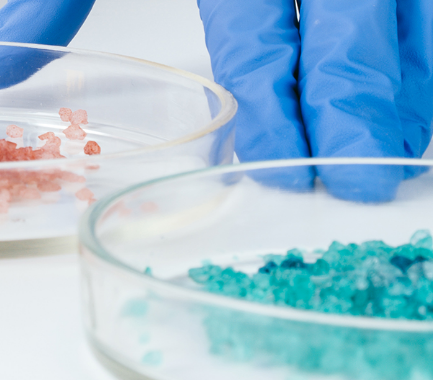Your contact
PENPET-Team - Hamburg

Jan Prager
Sales
Tel. +49 (0) 40 - 675 7 99 10
sales@penpet.de
Get in touch with us.
1,2 Dichloropropane (DCP)
1,2 Dichloropropane is an organic compound from the class of saturated chlorinated hydrocarbons, which used to be a common solvent and is still of great importance in the chemical industry as a starting material for synthetic processes. The substance occurs in large quantities as a by-product of the manufacture of epichlorohydrin, and is also obtained by the chlorination of propane gas.
1,2 dichloropropane is only used to a limited extent as a solvent since its harmful properties became known. Historically, it has been used in the manufacture of paint strippers, adhesives, resins, waxes, oils, degreasers, varnish, pesticides, and industrial cleaning products, among others. The substance is now mainly used as a raw material for the synthesis of chlorinated compounds such as tetrachlorethylene.
At PENPET, you can get 1,2 dichloropropane of the highest quality, from a reliable partner who will also meet your requirements in the long term. We look forward to receiving your inquiry for an individual offer. Prompt delivery of the liquid can be made in IBC packages and drums with different weights.
CAS no. 78-87-5
EINECS no. 201-152-2
Molecular formula: C3H6Cl2
Synonyms: 1,2-DCP, 1,2-D, propylene dichloride, (±)-1,2 dichloropropane, (RS)-1,2 dichloropropane, (S)-1,2 dichloropropane, (R)-1,2 dichloropropane
Areas of application: Starting material for syntheses in organic chemistry, solvent
More Information
1,2 dichloropropane is a compact chemical compound composed of the elements carbon, hydrogen, and chlorine. Two hydrogen atoms in a regular propane structure are substituted by chlorine atoms. These are located on one of the two terminal carbon atoms and the middle carbon atom of the molecule. The only difference between the compound and the isomeric substance 1,3-dichloropropane is the position of the chlorine atoms.
The compound represents a chiral, stereoisomeric substance. There are two forms of 1,2 dichloropropane that differ only in the spatial arrangement of their components. These enantiomers are referred to as (S)-1,2 dichloropropane and (R)-1,2 dichloropropane. In technical applications, the racemate, i.e. the mixture of both forms in equal proportions, is usually used.
Under normal conditions, 1,2 dichloropropane is a clear, colorless liquid with a slightly sweet odor reminiscent of chloroform. It only solidifies when it cools below -100 °C and boils at 96 °C, a little earlier than water. The compound is only sparingly soluble in water. Undissolved parts of the liquids settle on the bottom of the container due to their higher density. However, the substance is readily soluble in organic solvents such as chloroform, benzene, diethyl ether, and ethanol.
When stored in an airtight, dry and cool place, 1,2-dichloropropane is chemically stable. However, the compound reacts dangerously with alkali amides, alkali metals and alkaline earth metals. There is a risk of explosion on contact with metal powders, aluminum and oxygen-rich compounds. In the presence of aromatic substances, even traces of light metals in the solvent can trigger explosions. When storing, it should also be noted that 1,2 dichloropropane attacks some plastics, rubber and coatings.
1,2 dichloropropane is flammable. When handling open containers of the volatile compound, it must be ensured that its vapors can form highly flammable and explosive vapor-air mixtures with the ambient air. These are heavier than air and can collect and spread unnoticed on the floor of the workroom. To avoid dangerous remote ignition, ensure sufficient distance from sparks, flames, hot surfaces, electrical discharges and other sources of ignition when handling 1,2-dichloropropane. During combustion and thermal decomposition of the substance, dangerous and harmful decomposition products such as carbon dioxide, carbon monoxide, phosgene, hydrogen chloride, and dioxins are formed.
Acute and chronic health hazards emanate from 1,2 dichloropropane. In addition to local irritation, severe symptoms of poisoning can occur. In the event of contact with the skin, allergic reactions and sensitization cannot be ruled out. The compound causes redness, burning pain and damage to the cornea in the eye. However, resulting visual impairments are usually reversible. After immediate, thorough rinsing with water, arrange for an ophthalmological check-up. Affected areas of skin should be cleaned with soap and water and treated with moisturizing skin care products.
Ingestion of the compound leads to severe gastrointestinal symptoms such as pain, nausea, and queasiness. Inhaling 1,2 dichloropropane causes irritation of the respiratory tract, sore throat, coughing and burning pains as well as dizziness and intoxication of the central nervous system. In the event of absorption into the metabolism, unconsciousness, coma, dangerous cardiovascular reactions, respiratory function disorders and severe organ damage to the kidneys and liver can also occur. After oral intake of 1,2 dichloropropane or inhalation of the substance, a specialist medical examination with subsequent medical observation must be initiated. The compound, which is likely to cause cancer, poses long-term health risks.
1,2 dichloropropane degrades very slowly in nature. The half-life of the substance in groundwater can be up to 2 years. Due to its harmful effect on organisms, the compound is considered to be highly hazardous to water and must under no circumstances get into water, the ground or waste water. Even if the smallest amounts of the substance escape into the environment, the responsible authorities must be informed. As a hazardous substance, 1,2 dichloropropane is subject to special transport regulations.
